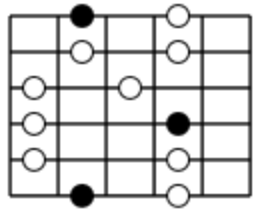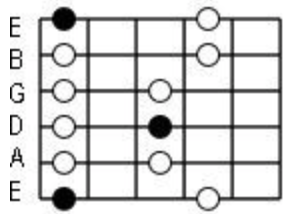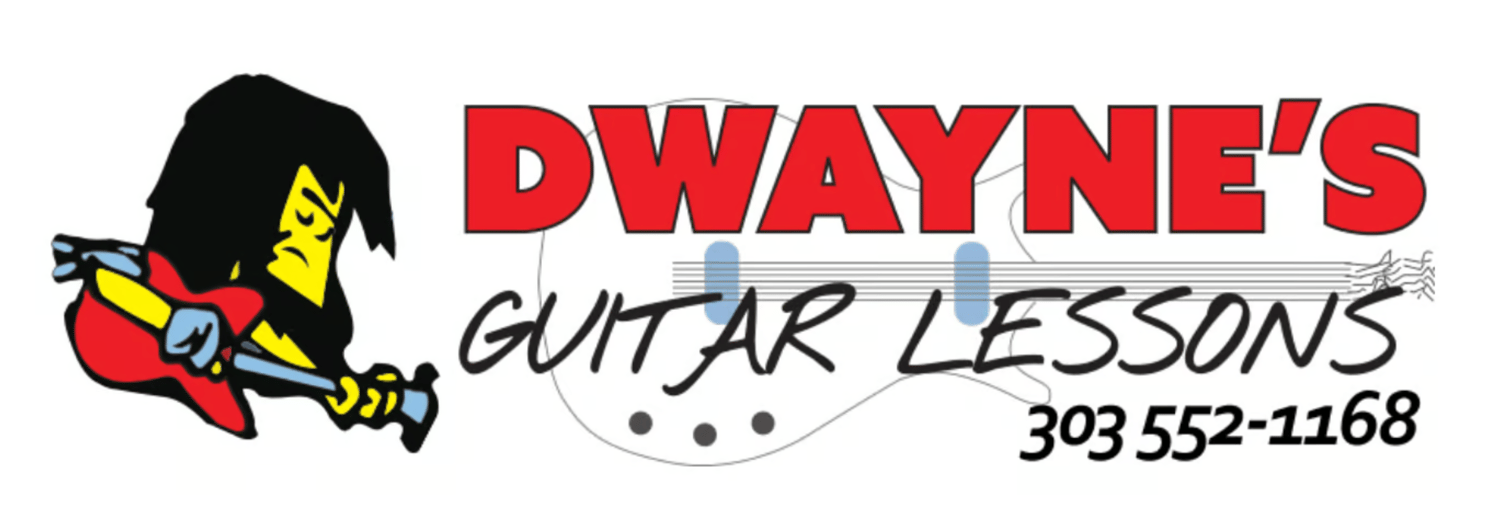In this lesson, we are going to explore the difference between the major & minor pentatonic scales. These two scales can allow you to master the fretboard and create an unlimited supply of musical ideas for playing both harmony and melody. Unlocking the secrets between the two will allow you to expand your musical knowledge and enhance your technical ability.
What are Scales?
Scales are a certain selection of notes that are played within a certain order. You have major scales, and you have minor scales. These are made up of the 7 notes of the key that they are derived from. Like the Do Re Me, which is the major scale everyone is most familiar with.
Scales that are the most common across a multitude of genres are the pentatonic scales. There are 5-note scales that are both major and minor. Both are fairly easy to learn and can be played in a variety of ways. This lesson will dive into the differences between the two, highlighting their characteristics and applications.
Pentatonic Meaning:
The 5-note pentatonic scale comes from two words: penta, meaning five, and tonic, meaning tone. So, the word itself tells us what they are. Scales that are created from five notes. Kind of like triads. Triads are three-note chords from the word tri. This is the same concept. When it comes to theory, understanding scales is fundamental. The pentatonic scales are most popular because of their simplicity and versatility.
The Major Pentatonic Scale

Structure:
The major pentatonic scale is derived from the 7 notes of the major scale. The Do Re Me. To form the major pentatonic scale, we take all the notes and leave out the 4th and 7th. This leaves us with a 5-note scale that is more harmonious within multiple styles of music. The formula for the major pentatonic scale is:
- Root
- Major Second
- Major Third
- Perfect Fifth
- Major Sixth
In other words, the 1, 2, 3, 5, & 6. For example, if we were using the key of C major: C D E F G A & B, we would be using 7 notes. To convert it into the major pentatonic scale, we would use all the notes except the F & B, which are the 4th and 7th, and bring it down to only 5 notes. Easier to use, and easier to understand.
C Major: C D E F G A B (7 notes)
C Major Pentatonic: C D E G A (5 notes)
As you can see from the example above, to create the major pentatonic scale, we just find the notes in the major scale (and that goes for any major scale), and just remove the 4th and 7th notes, and we have the major pentatonic scale.
Characteristics and Uses:
The major pentatonic scale is often described as having a bright and happy sound. Its lack of half steps (notes that are next to each other) eliminates the tension typically found in other scales. This makes it particularly effective in genres like country, folk, and pop music. The simplicity of the scale also makes it a favorite among beginners and many improvising musicians.
As you learn songs within these genres mentioned above, especially the solos and melody lines, you'll see clearly how the major pentatonic scale is used for these purposes. The major pentatonic scale can be used for both harmony and melody in any major key. You just need to know how to play it, where to play it, and how to get the most from the notes within it. Once you learn and understand how it works, it will unlock mysteries within the fretboard.
The Minor Pentatonic Scale

Structure:
The minor pentatonic scale, on the other hand, is made from the natural minor scale. I say natural minor, because there are different types of minor scales. So it is the natural minor that we will use for this example. When creating the minor pentatonic scale, we will use all the notes except for the 2nd and 6th. Which will once again leave us with 5 notes. The formula for the minor pentatonic scale is:
- Root
- Minor Third
- Perfect Fourth
- Perfect Fifth
- Minor Seventh
In other words, the 1, flat 3rd, 4, 5, & flat 7th. For example, if we were using the key of A minor, the notes would be A B C D E F & G. We would be using 7 notes. To convert it into the minor pentatonic scale, we would use all notes except for the B and the F. The 2nd and 6th notes of the A minor scale. Once again, making it more versatile and easier to learn.
A Minor: A B C D E F G (7 notes)
A Minor Pentatonic: A C D E G (5 notes)
In the key of A major, the third would be C# and the 7th would be G#. When we convert it into a minor scale, we change these notes to C & G. That is why they are considered flat in the minor pentatonic scale. The minor pentatonic scale (especially the A minor pentatonic scale) is usually the one that you learn first.
Characteristics and Uses:
The minor pentatonic scale is known for its bluesy and soulful sound. It is widely used in blues, rock, and jazz music. The scale structure allows for easy playability, expressiveness, and improvisational melodic phrasing, which is why it is a staple in soloing and lead work.
The way the notes line up along the fretboard makes it easy to learn, easy to play, and easy to remember. There are also 5 different variations of the scale (the major as well), which allow for diversification in your playing, along with a chance to master the fretboard and stay in key. This is why this scale is usually the first minor scale you learn, as well as the first scale in general you will come across.
Comparing Major & Minor Pentatonic Scales
Tonal Quality:
- Major Pentatonic: Bright, cheerful, and uplifting
- Minor Pentatonic: Dark, soulful, and expressive
Common Uses:
- Major Pentatonic: Often found in country, folk, and pop music
- Minor Pentatonic: Predominantly used in rock, blues, and jazz
Shared Characteristics:
Both scales are versatile and user-friendly, making them easily accessible for guitarists of all skill levels, especially beginners. Their 5-note structure reduces the likelihood of playing out of key, as well as provides a thorough way of mastering the fretboard.

Since they both consist of five notes, they both have five patterns. One pattern based on each note in the scale. By knowing the notes within the scale, you can easily see where one pattern leaves off and the next pattern begins. These allow you to interlock them like puzzle pieces. By doing this, they span the fretboard from the first note to the octave.
Lesson Conclusion:
Understanding the difference between the major and minor pentatonic scales can significantly enhance a guitar player's musicianship and ability to express diverse musical landscapes. Whether you are aiming for the bright sounds of the major pentatonic or the dark depths of the minor pentatonic, these two scales offer a wealth of possibilities for emotional musical exploration.
As you continue your guitar learning journey, experiment with both scales and the patterns within them to discover their unique qualities. In time, you will grasp how they can enrich your compositions and performances. Allowing you to express different emotions utilizing different pattern shapes along the fretboard.
More Training Available
Dive Deeper:
If you'd like to dive deeper into these pentatonic scales and learn how they can be used as explained above, I recommend you check out the method book I authored, How To Play Guitar Solos. This is an introductory guide on how to use both major and minor pentatonic scales to play guitar solos.

In this comprehensive training guide, you'll learn the concepts and techniques that all great lead guitar players use to create jaw-dropping solos. The ones that reside in your favorite songs. You will start as a novice and systematically progress to a guitar player who has a solid foundation of what it takes to compose solos that fit harmoniously within the musical landscape.
With this book, you will become a much better guitar player and overall musician. With daily study and practice, you will enhance your abilities and understanding of how music works and how to unlock the mysteries of the fretboard. I recommend you check it out. If you follow the lessons as instructed, you will no doubt see quick improvements in your playing.
Personal Assistance:
If more help is needed, feel free to reach out, as I offer personal assistance through private one-on-one instruction. A great way to travel through the twists and turns along the guitar learning journey. Getting immediate feedback, learning what interests you, and having an enjoyable experience doing it. Just contact me through my website at Dwayne's Guitar Lessons, and we'll set up a free consultation.
Thanks for your time today,
And good luck with your learning.
Sincerely, Dwayne Jenkins


